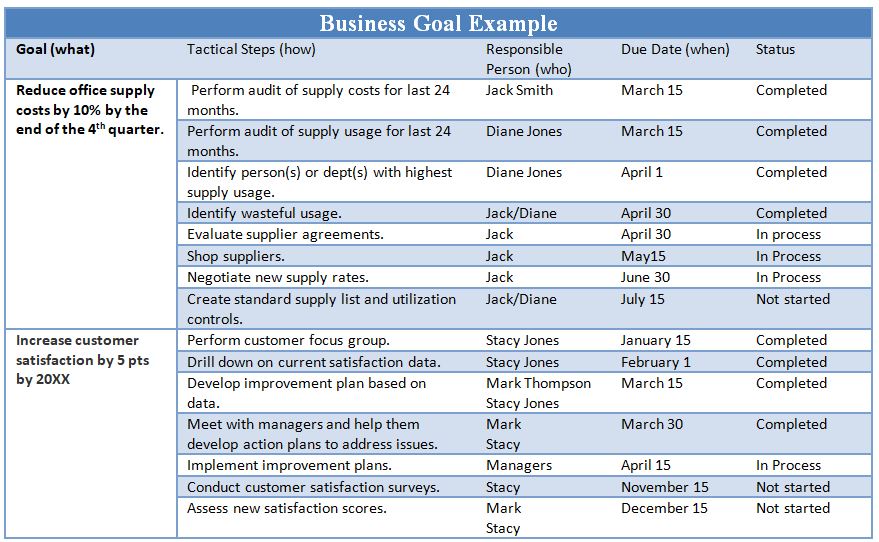How Do I Write Goals for an Organization?
Businesses need to plan to be successful. An important part of the business planning process is determining business objectives that are translated into actionable business goals.
Goals should support the strategic plan – a written document that articulates an organization's strategy for achieving its mission and vision.
The goal development process looks at this strategy and determines the necessary steps to get there.
Goal writing does not have to be overly complicated.
But, it does require commitment and the discipline to follow through and complete the required action steps.
Spend time to think through your goals so that you can have enough detail to achieve your desired results.
To do this, many organizations use the SMART goal model to articulate their goals.
SMART Goals are:
S pecific – Is the goal specific enough for clarity?
M easurable – Is there a way to measure the goal? In other words, how do you know you achieved the goal?
A ttainable – Is the goal truly attainable? Or is it such an outlandish goal that it looks good on paper but is nearly impossible to complete.
R ealistic – Did you write the goal realistically? For example, did you address all the challenges of completing the goal and provide the necessary resources?
T imely – Is there a timeline associated with the goal to ensure a completion date?
"If you can't measure and monitor your goals, chances are that your employees will never achieve them and you won't know the difference…" Managing for Dummies

Organizational goals should be written to support activities that contribute to the organization's ability to move forward – increasing revenues, decreasing costs, and improving customer experience.
Examples of SMART Business Goals:
1. Reduce overall budget costs by 10% by 20xx
2. Increase market share by 5% by 20xx
3. Increase revenues by 20% by 20xx
4. Increase customer satisfaction by 5 pts by 20xx
If you take one aspect of budget costs, which could be supply costs, you can write SMART goals to reduce them.
The goal development process includes a discussion with the appropriate people and should answer the questions: who, what, when, and how .
These four questions help to facilitate a discussion and thought process that flushes out the details needed for writing effective goals.

Once the questions are answered a goal setting worksheet can be created as an easy visual of the goal plan.
Now let's look at a couple of these goals and put them in a goal document.
One of the most important things when writing goals is the follow-up and completion of goals.
A goal document is no more than a piece of paper if there is not a person held accountable for achieving those goals.
This makes it so important to use the document as a tool to help manage the performance of the employees assigned to complete the action steps and should also be part of the annual performance appraisal process.
Managers should use this as a guide throughout the year and reinforce the deadlines outlined in the document.
A structured performance management process, which includes rewards and recognition for employees, is critical to ensuring goal completion.
An organizations' ability to write and accomplish annual goals is critical to achieving corporate objectives.
If you would like an editable copy of this example of business goal document – click here.
Does your organization write annual goals?
How Do I Write Goals for an Organization?
Source: https://thethrivingsmallbusiness.com/examples-of-business-goals/
0 Response to "How Do I Write Goals for an Organization?"
ارسال یک نظر